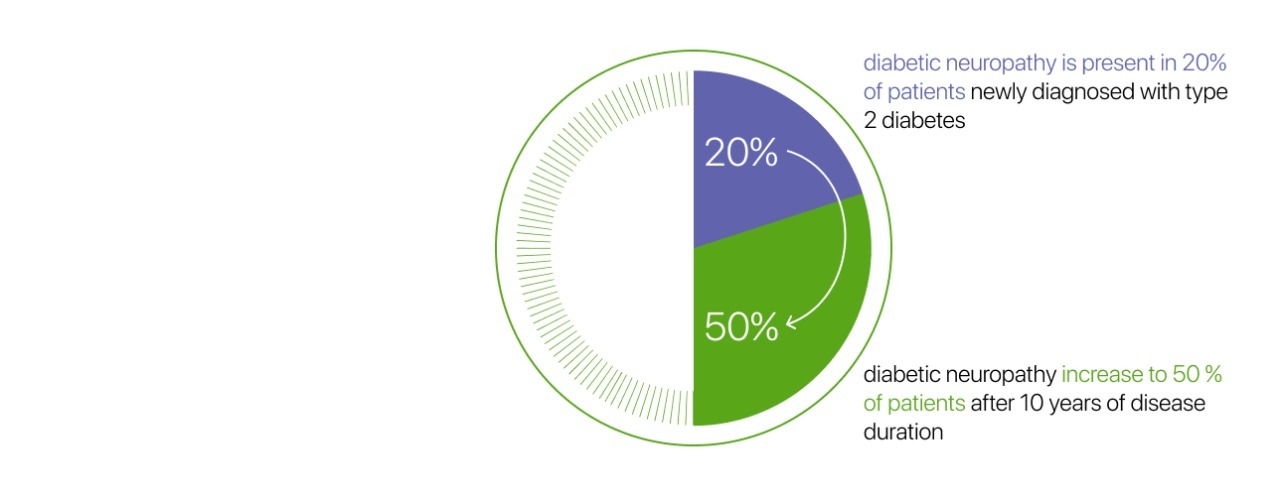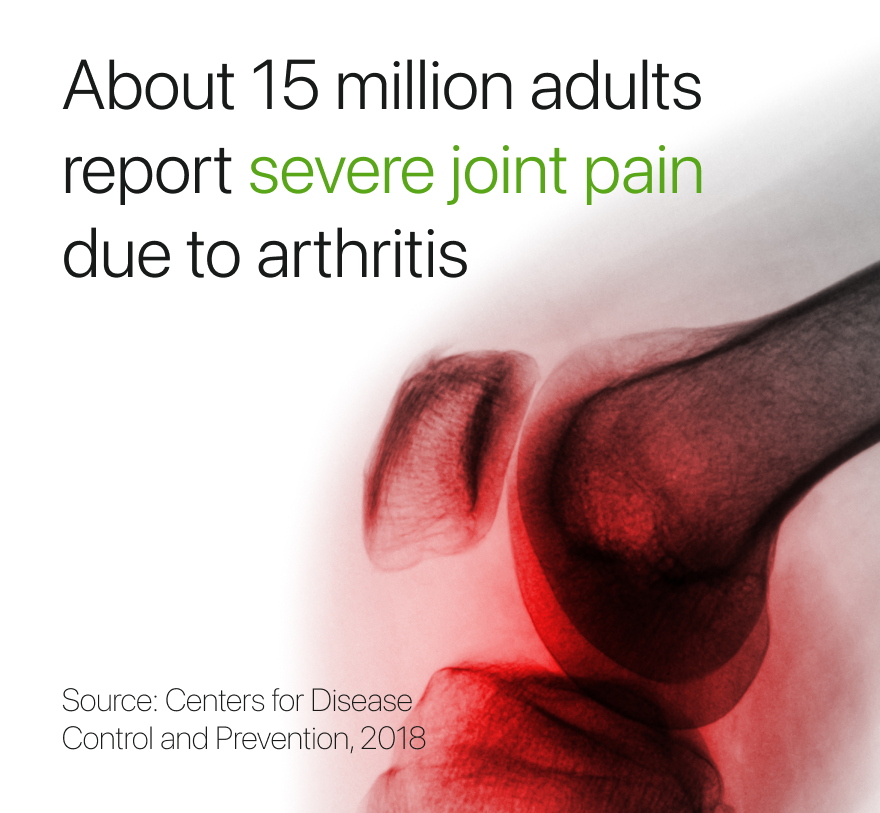Chronic pain management: treatment improvement regarding diagnosis

Today we will discuss what diseases cause chronic pain and how you can improve pain management treatment regarding diagnosis.
If a person experiences pain that lasts more than 12 weeks despite medication or treatment, it is a warning sign that a person may have chronic or persistent pain. In general, chronic pain can commonly affect those people who suffer from arthritis, diabetes, fibromyalgia, or back pain.
Types and symptoms of chronic pain
There are several types of pain, including types that differ from chronic pain. For example, acute pain occurs when a person gets a fracture, dislocation, or cut, and when it is cured, the pain disappears.
Chronic pain is the opposite situation:
As we have already mentioned, there are different types of pain and it manifests itself in different ways, usually, chronic pain includes the following diseases: back and neck problems, migraines, cancer, and joint pain.
Usually, people who suffer from chronic pain describe it as burning or throbbing, though it can also be shooting sensations or squeezing. Unfortunately, it is not always possible to give an answer to what exactly causes chronic pain. As a rule, injuries and diseases cause changes in the human body and this is what makes people more sensitive to pain, even after recovery. Doctors also tend to believe that the cause of chronic pain can be a psychosomatic reaction, so, a human psychological factor, and this leads to other types of symptoms such as depression, anxiety, insomnia, and fatigue.


The problem of chronic pain is extensive, according to the Center for Disease Control and Prevention about 50 million US adults have chronic pain. That’s over 20% of the population of the United States of America, and with such significant numbers , people should be aware of pain management options. Before we get to this topic, it is worth focusing first on the importance of diagnosis.
Firstly, pain should not be ignored under the assumption that it will disappear over time.
Secondly, it is important to determine the correct diagnosis and try to identify the cause of pain in order to know how to prevent it and choose the right treatment for the patient. Without a proper diagnosis, effective pain management will be nearly impossible to achieve.
The first step in pain management: determining the diagnosis of chronic pain
Pain management is a medical process that makes it easier for a person to reduce pain. As we have already mentioned we should focus not only on the pain itself.
The first and most important task is to determine the diagnosis which causes chronic pain to prescribe the most appropriate and effective treatment
Depending on the diagnosis and individual health condition of the patient, there would be different approaches for pain management. Diagnosis defines the proper medication therapy approach. Along with that, the medical history of the patient, known drug tolerances, allergies, sensitivities, and other health factors can influence the final medication formulation to achieve a maximum outcome with decreasing possible side effects. It is also important to understand what chronic pain can lead to, because people may experience worse symptoms and complications, which can inevitably lead to further consequences. But if we diagnose causes and prescribe treatment in time, we can often prevent the worst outcomes.
Overview of arthritis and neuropathy pain
Let us separately consider arthritis and neuropathic pain, which are two of the most widely experienced types of chronic pain.
When a person suffers from arthritis, he or she feels pain in the joints, stiffness and these symptoms tend to worsen in older age. The arthritis inflammation caused by cartilage thinning and reduction of its elasticity. According to the Center for Disease Control and Prevention, arthritis affects about 1 in 4 adults in the United States, or over 50 million adults.




Neuropathic pain is caused by damage or injury to the nerves that transmit information between the brain and spinal cord from the skin, muscles, and other parts of the body. Unfortunately, it causes unbearable pain in a person, difficulty in distinguishing temperature, numbness, etc. According to the National Library of Medicine, the best estimate of the population prevalence of pain with neuropathic characteristics is likely to lie between 6.9% and 10%.
The numbers are considerable and the symptoms are severe, which is difficult to live with, so it is understandable what an important role pain management plays in the lives of people who are suffering from such diseases.
Drug classes used for arthritis and neuropathy pain management
Arthritis diseases
Includes fibromyalgia, psoriatic arthritis, osteoarthritis, and gout. We help patients to reduce the symptoms of all these diseases.
For the treatment of such diseases, our pharmacists use NSAIDs (Nonsteroidal anti-inflammatory drugs) class of drugs, which includes:
Neuropathic diseases
Affects different parts of the body and can affect anyone, regardless of age, gender or ethnicity. Neuropathy can result from many diseases such as type 2 diabetes, sciatic neuropathy, postherpetic neuralgia, and vitamin and nutrient deficiencies. To combat the symptoms of these diseases Mega Aid Pharmacy uses counterirritants/rubefacients and anesthetics/numbing agents, we have already described how they act on the human body,
so it remains for us to describe the rest:
Benefits of compound treatment for arthritis and neuropathy chronic pain
Often patients with chronic conditions can’t find appropriate formulations or dosage forms among traditional commercially-available drugs. Because traditional commercially-available drugs with standardized formulations don’t consider the individual health condition of the patient, known drug tolerances, allergies, sensitivities, and other health factors can influence the final medication formulation to achieve a maximum outcome with decreasing possible side effects.
The advantage of Mega Aid compound treatment is that:
Mega Aid Compounding Pharmacy uses USP-quality chemical ingredients and complies with the highest standards of dispensing, mixing, packaging, and storage of the compounds aiming to effectively help patients reduce their symptoms and improve their quality of life.
Medication therapy management as a key to patient compliance and treatment improvement
Let’s move on to the topic of our medication therapy management program conducted by Mega Aid Compounding Pharmacy (MTM).
One of the main problems is that often patients are not aware of the threats that a particular disease can pose and may not take treatment too seriously.
According to one FDA study, 20 to 30 percent of new prescriptions are never filled at the pharmacy.


Also, patients may simply forget to take their prescribed medicine because of their occupation or confusion with numerous prescribed drugs at the same time.
In addition to door-to-door delivery, Mega Aid Compounding Pharmacy always maintains proactive contact with patients through our in-house medication therapy management program. We follow up on a patient after serving them, monitor their health condition, and measure patient outcomes for improvements.
The advantage of Mega Aid Compounding Pharmacy’s in-house end-to-end digital medication therapy management system is that we have a powerful database where we record the entire treatment, symptoms, and all prescribed drug history of the patient. It helps us to monitor the patient’s health much more effectively and improve treatment in collaboration and communication with the healthcare provider. With these proprietary systems, we can track treatment outcomes, interactions with other prescribed drugs, allergic reactions and all other symptoms during the course of therapy.
We also understand the problem of lack of patient’s literacy. Not all patients understand how to use medicines properly and what is the correct dosage because of the large amount of information. The patient can get confused and misremember all the rules of medicine usage. Mega Aid Compounding Pharmacy not only monitors the health of patients but also educates them about proper medication usage and explain the importance of attitude and responsibility for their health.



